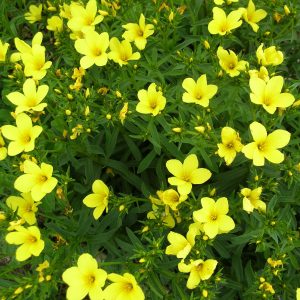Shop
Showing 481–488 of 788 results
-
Limonium minutum Dwarf statice Z 5-9
All summer long, droves of lavender blossoms above a mini pillow of spoon-shaped, glossy foliage.
OUT OF STOCK
All summer long, droves of lavender blossoms above a mini pillow of spoon-shaped, glossy foliage.
Size: 6-8” x 6-8”
Care: sun in well-drained soil
Native: southeast France on limestone seacliffs
Wildlife Value: deer resistant, salt tolerantDescribed by Linnaeus, 1753. The name Limoniuim comes from the Greek word for meadow.
-
Linaria alpina Alpine toadflax Z 5-8
Purple snapdragon-like petals bloom all summer and show off golden-orange lips
OUT OF STOCK
Purple snapdragon-like petals bloom all summer and show off golden-orange lips
Size: 4-6” x 6-12”
Care: sun in well-drained soil
Native: Mountains of central and southern EuropeListed in Gardeners Dictionary, 1768. Wm Robinson in July 1872 issue of The Garden: “The alpine Linaria is never more beautiful than when self-sown in a gravel walk.” January 1876 bloomed for 4+ months in the rock garden at Edinburgh Botanic Garden.
-
Linaria purpurea Purple toadflax Z 5-9
Violet racemes all summer July to September
Violet racemes all summer through fall
Size: 36” x 12”
Care: Sun, well-drained soil
Native: Southern EuropeBoth the Latin and common names are related to flax. Linaria comes from “linum” which is Greek for “flax” and toadflax includes the word “flax.” The leaves of Linaria purpurea resemble flax leaves. According to 17th century English herbalist, John Parkinson, the plant “causes one to make water.” Grown by English plantsman and explorer, Tradescant the Elder, 1634.
-
Linum alpinum Alpine flax, Mountain flax Z 4-9
Compact blue flax, perfect for the rock garden or in a sunny border. Bushy mound of small soft-blue saucers for weeks in late spring & early summer. Reblooms if you cut it half way back in late June
Compact blue flax, perfect for the rock garden or in a sunny border. Bushy mound of small soft-blue saucers for weeks in late spring & early summer. Reblooms if you cut it half way back in late June
Size: 8-12” x 10-12”
Care: sun in well-drained soil
Native: mountains of EuropePublished as a separate species in 1925.
-
Linum flavum compactum Dwarf golden flax Z 4-9 SUBSHRUB
Flowers like canary yellow cups, June-July.
ARCHIVED
Note: This is a plant not currently for sale. This is an archive page preserved for informational use.
Flowers like canary yellow cups, June-July.
Size: 6- 12”x 14”
Care: sun in well-drained to moist well-drained soil
Native: Central & So. EuropeDescribed by Parkinson in 1640. “Flowers golden yellow, in a much branching cyme, the showy petals much exceeding the …sepals … not popularly known in this country.” L H Bailey (1933)
-
Linum perenne ‘Lewisii’ Perennial flax, Prairie flax Z 4-8
Sky blue flowers closing by afternoon all summer
Sky blue flowers closing by afternoon all summer
Size: 18" x 12"
Care: Full sun in well-drained soil.
Native: Wisconsin west and southLimonium is Greek meaning “meadow” and latifolium means “wide leaf”. This was identified by Dioscorides in De Materica Medica for medicinal use around 70 A.D. Cultivated in gardens since 1700’s. Formerly used to repel moths and cure canker sores.
-
Liquidambar styrociflua Sweet gum Z 5-9
Star-shaped leaves turn parti-color in fall – red, purple, orange. Gum ball fruit matures in winter.
ARCHIVED
Note: This is a plant not currently for sale. This is an archive page preserved for informational use.
Star-shaped leaves turn parti-color in fall – red, purple, orange. Gum ball fruit matures in winter.
Size: 60-80‘ x 40-60’
Care: sun in moist to moist well-drained acidic soil
Native: Eastern US north to southern IL & west to Mississippi River.
Wildlife Value: Deer resistant & black walnut tolerant. Seeds food for numerous birds.Cherokee made a salve for wounds & sores from the tree & mixed it with sheep or cow tallow for itches.
Collected before 1753. Grown at America’s 1st botanic garden, Elgin Botanic Garden 1811.**LISTED AS OUT OF STOCK BECAUSE WE DO NOT SHIP THIS ITEM. IT IS AVAILABLE FOR PURCHASE AT OUR RETAIL LOCATION.
-
Liriodendron tulipfera Tulip tree Z 4-9
Large tulip-shaped yellow-green petals surround orange corolla, Ornamental leaves turn yellow in fall
Large tulip-shaped yellow-green petals surround orange corolla, Ornamental leaves turn yellow in fall
Size: 80-100’ x 30’
Care: sun in well drained to moist well drained soil. Fast growing and strong wood.
Native: New England to FL, Ontario to IL, south to Louisiana and all states in between.
Wildlife Value: attracts Tiger swallowtail butterfly.
Awards: Recipient Great Plant Pick Award from Elizabeth Carey Miller Botanical Garden & England’s Royal Horticultural Society Award of Merit & Great Plants for Great PlainsOne of the oldest flowering trees – about 95 million years old. Cherokee cured pinworms, cholera, dysentery, coughs, wounds, boils, fever, bone fractures, indigestion, snakebites, and “women with hysterics” with Tulip tree. Because it is light weight but strong they made canoes for up to 20 people with Tulip tree wood. The Rappahannock chewed the bark as a stimulant for sex. Sent to Europe by Tradescant before 1640. Grown by Jefferson. Washington planted them as an allée around the serpentine bowling green.
State tree of Indiana, Kentucky, North Carolina and Tennessee.
**LISTED AS OUT OF STOCK BECAUSE WE DO NOT SHIP THIS ITEM. IT IS AVAILABLE FOR PURCHASE AT OUR RETAIL LOCATION.







